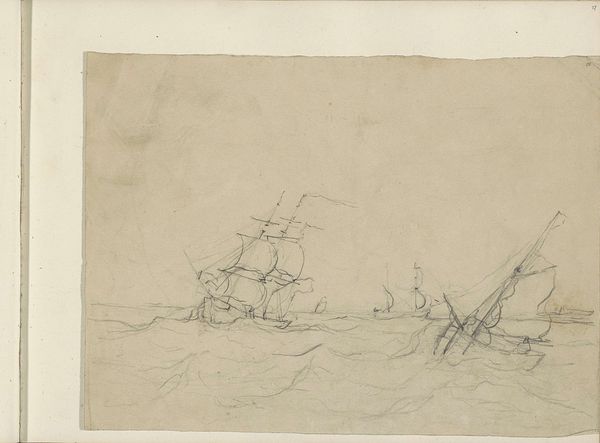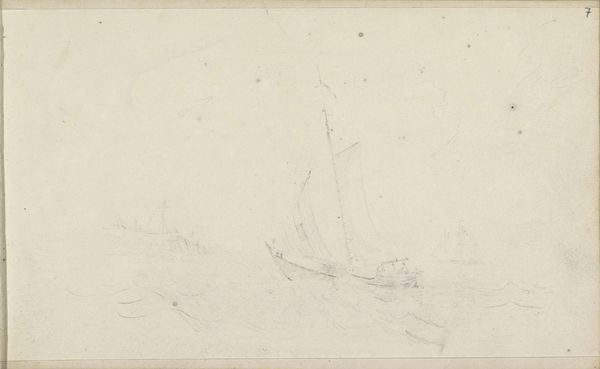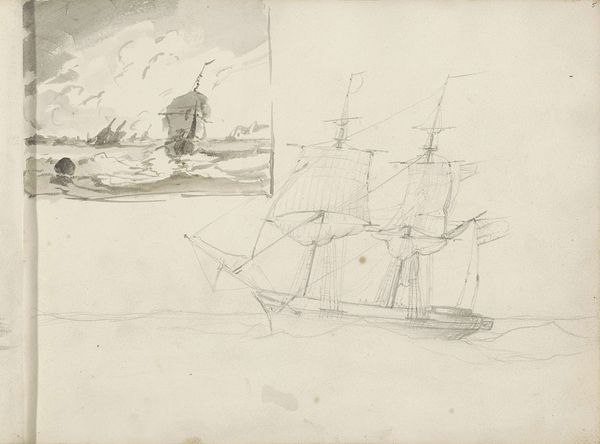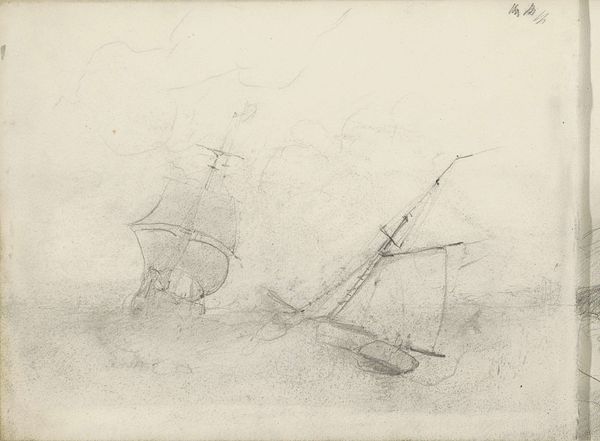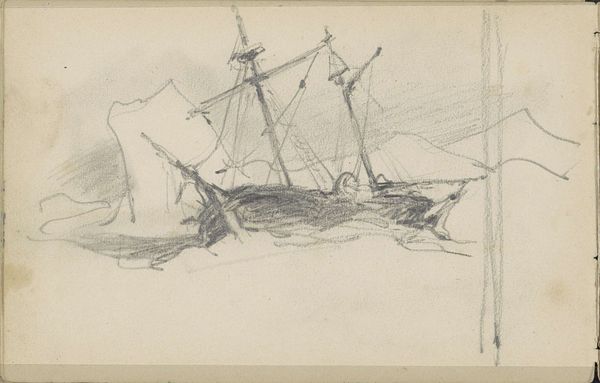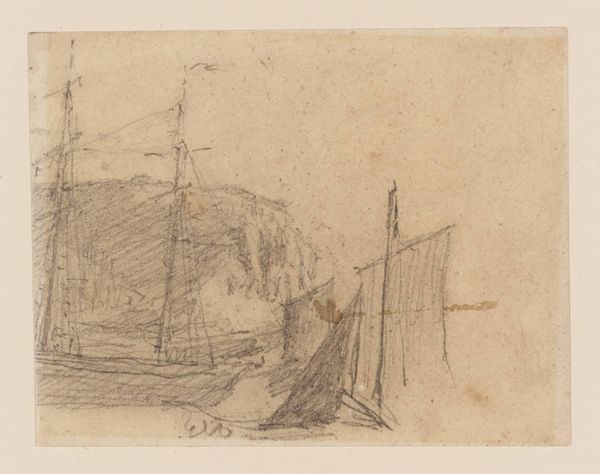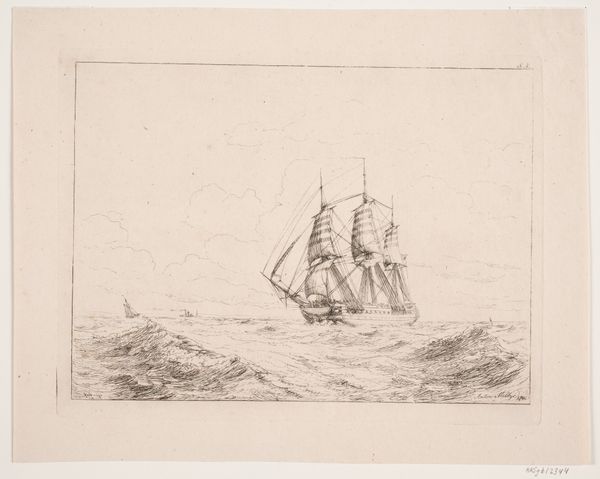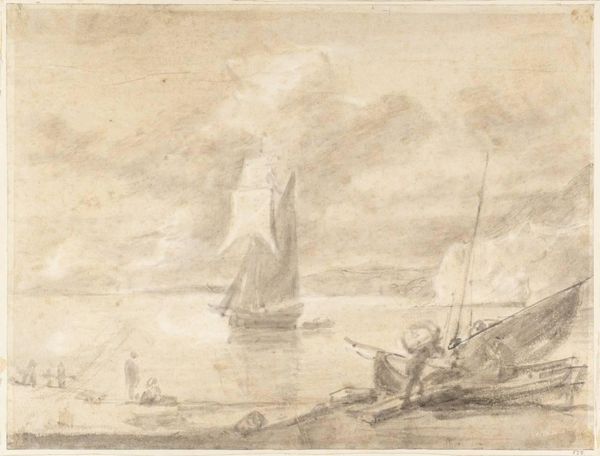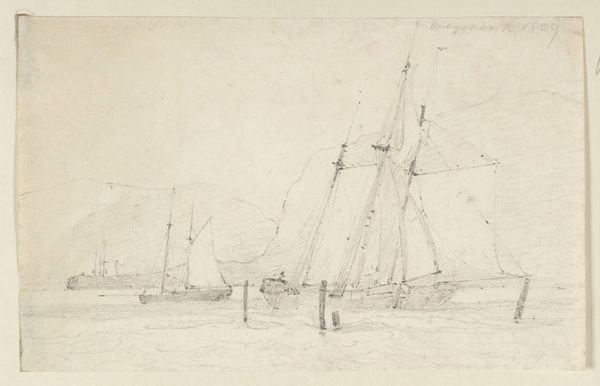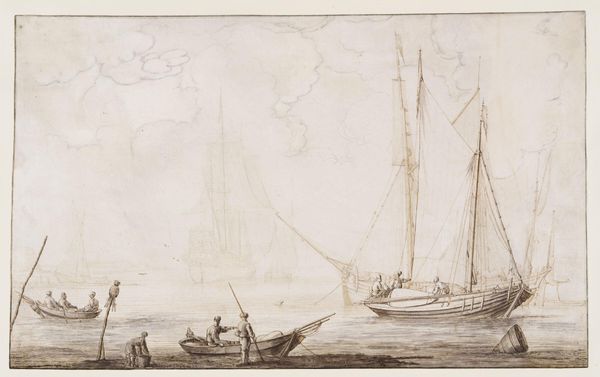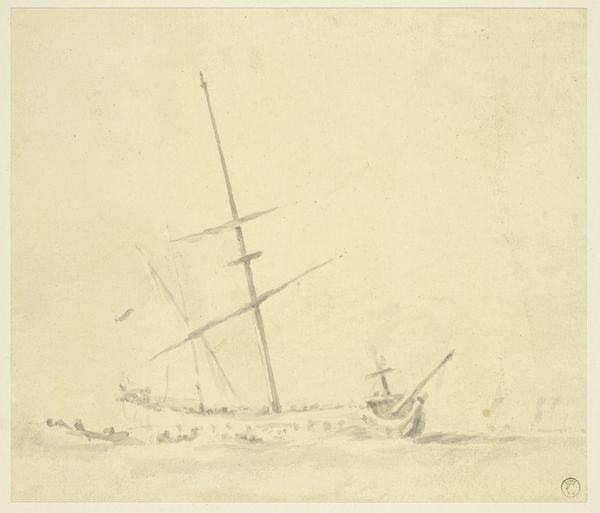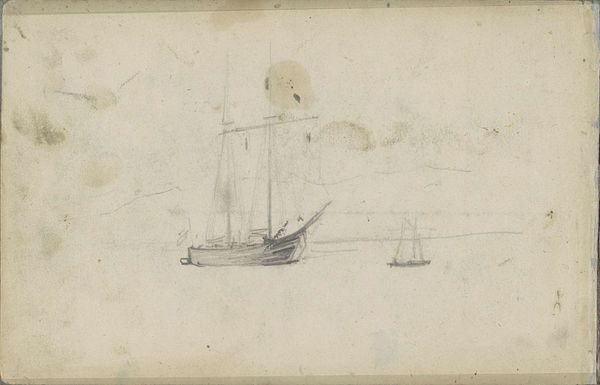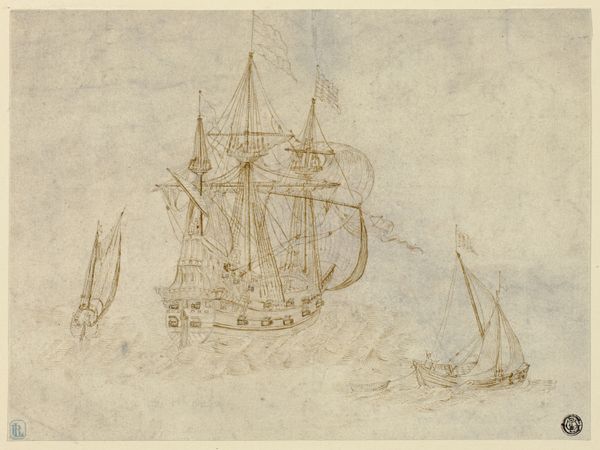
drawing, pencil
#
drawing
#
pencil sketch
#
landscape
#
romanticism
#
pencil
Copyright: Rijks Museum: Open Domain
Editor: This drawing, "Zeegezicht met schepen" – or "Seascape with Ships" – by Petrus Johannes Schotel, made with pencil sometime between 1825 and 1875, has a rather turbulent feel. What compositional elements stand out to you in this piece? Curator: Initially, it is the contrasting application of the pencil that draws my attention. Notice the rough, almost frantic lines used to depict the waves in the foreground, which give way to a softer, more suggestive rendering of the ship in the background and the clouds above. It presents a visual tension. Editor: It's interesting you mention tension. The rough lines make it feel unfinished or perhaps like a preliminary sketch. Curator: Precisely. However, this rawness is crucial. Note how the lines describing the foreground boat are more definite, even if sparse, which keeps the image from dissolving entirely. We must consider the function of the medium here: the graphite creates texture in lieu of colour or elaborate shading. The form is prioritized. Editor: So, you're saying that the artist isn't aiming for photorealistic accuracy, but using the medium itself to express a mood or feeling? Curator: Indeed. The swiftness and looseness of the pencil lines arguably mimic the fleeting, changeable nature of the sea. The effectiveness here comes not from detailed representation but from the suggestion of movement and form, of weight and precarity. What is most important here are the aesthetic choices Schotel made using his materials. Editor: I see how the very act of sketching contributes to the overall sense of the scene. I hadn’t thought of it that way before. Curator: Visual art asks us to be active viewers; what initially appears incomplete may, upon reflection, be profoundly articulate.
Comments
No comments
Be the first to comment and join the conversation on the ultimate creative platform.
